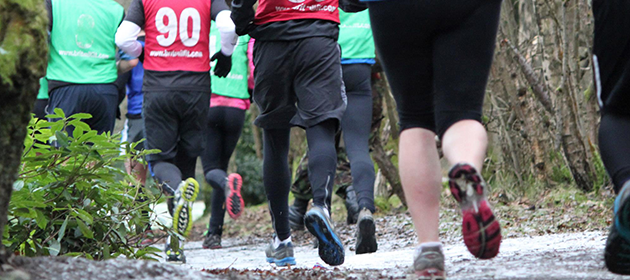
Running: Technique is everything
September 5, 2013
Topics:

Most runners believe the purchase of a decent pair of shoes is the best and only way to start running. We frequently hear the words ‘well it’s easy, just put one foot in front of the other’. How wrong could you be?
As a massive running enthusiast, and technique coach, it pains me to hear these comments, especially when people think nothing of taking lessons to learn the techniques of tennis, golf and swimming. Running is just the same. It’s a technique and it must be mastered. Whether you run to keep fit, compete in marathons or participate at any level in BMF, you can always improve your running technique. Running well and running fast is a skill, not something you were born with. Whilst teaching classes I often take the time to see what styles people are using to run and it’s common to see the following errors:
- Over-striding
- Under-using their hamstrings
- Landing too heavily on their feet
- Breaking action on landing
- Not using their arms correctly
- Twisting the midriff side to side while running
- Bending the head and upper body forward
- Jogging slower than you would walk!
So how can you run faster and more efficiently whilst avoiding injury? The nervous, muscular, skeletal and cardiovascular systems of our body are all involved when we run. They all combine to create the neuromuscular and neuromechanical systems. We can improve the biomechanical movements for runners by teaching the body and mind the correct motor patterns. When you perform a motion the body sends messages to the brain in a certain sequence. To create a permanent map in your brain and nervous system you need to repeat this motion many times until it is ingrained in your muscles and your brain.
When you want to change a movement in your body it needs to be stored in your muscle memory so you can repeat without thinking, particularly when you are tired. Therefore, to change and improve your running technique you need to practice until it becomes natural. The key points that you should focus on when running are as follows.
Posture – your posture is absolutely the most important thing when you run. As you run, keep your head and chest upright and relax as much as possible; the whole of your upper body should remain stable but un-tensed.
Foot Strike – make sure you are landing on the forefoot on each stride. This promotes a balanced running position and avoids added stress through the joints. When you run each foot strike places double your bodyweight through the body. If you’re running in an inefficient manner then this is going to end in an injury.
Cadence – a high proportion of runners will be running at 160bpm. This encourages heel striking and also a poor posture. The correct cadence for runners is 180bpm, this will help with the foot strike and allow you to remain in a good postural position.
Proprioception – one of the most important factors in running is proprioception: the body’s awareness of itself. It is important to get feedback when we do anything in life and running is no exception to this. When we run 70% of the feedback is from the foot, 20% from the ears and finally 10% from the eyes. By wearing ill-fitting shoes you reduce the available 70% foot feedback and by listening to loud music you reduce your 20% feedback from the ear. It is therefore key to maximise these senses by wearing correct footwear and not listening to music.
Focusing on the areas above will provide you with the basic tools required to run in an efficient and natural manner.
Ed Kerry, British Military Fitness instructor - Hampstead Heath
Check to see if your park has a running club, go to your venue here.
